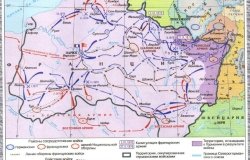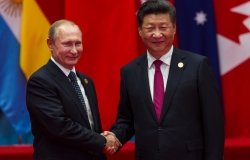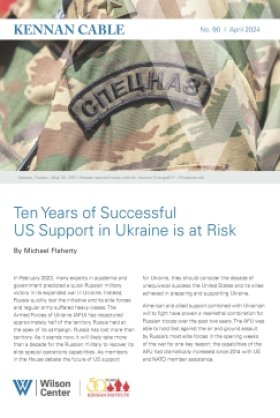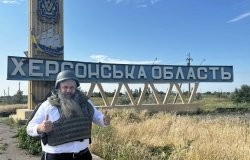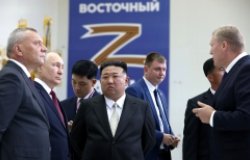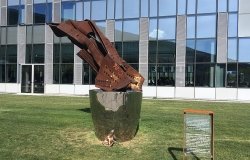The Different Evolutionary Paths of Democracy in East and West Ukraine: How Did We Get to 2004?
Christian W. Haerpfer, Associate Professor of Political Science, University of Vienna, Austria; Director, Center for Strategic Development, Institute for Advanced Studies, Vienna, Austria; and Fellow, Woodrow Wilson Center
Overview
At a recent Kennan Institute talk, Christian Haerpfer discussed survey data measuring the evolution of opinions and values across Ukraine during the 1990s. He then interpreted the results in an effort to explain the current political crisis in the aftermath of the Ukrainian presidential election.
Haerpfer noted that in the first round, the election result split quite cleanly, aside from a few contrary regions, with the Western and Central regions supporting the challenger Victor Yushchenko and the Eastern and Southern Regions supporting the incumbent Prime Minister Victor Yanukovych. The second round split, according to Haerpfer, was nearly, if not exactly identical.
A review of survey data of political opinions, Haerpfer contended, helps explain the results. The first question, designed to measure an individual's preference for democracy, asked the respondents whether they agreed with the statement "Democracy may have deficiencies, but it's better than any other form of government." In a breakdown by region, an average of 63 percent of respondents in 1996 agreed with that statement in the West-Central regions, increasing to 79 percent in 2000. The figures for South-East regions were 39 percent in 1996 and 55 percent in 2000. By 2002, those percentages declined across the board, but remained above 50 percent throughout the country. Haerpfer contended that, based on other data, the decline reflected dissatisfaction with the existing government and that the Ukrainian people's preference remained strong, though more pronounced in the West and Center regions.
Haerpfer also reviewed ethnic and religions statistics of the regional populations. He reported that the populations in the West-Center regions had larger Ukrainian majorities, and, conversely, the South-East regions had larger Russian minorities. Yushchenko won in regions where 50 percent or more of the population speaks Ukrainian, but also in 3 regions with majority Russian speakers. On religion, Haerpfer said, a common misperception is that Ukraine has a Catholic West and an Orthodox East. In fact, a majority of the population in both sectors is Orthodox, and both sectors have substantial minorities that profess a different or no faith.
Haerpfer next measured popular dissatisfaction with the government in Ukraine and other CIS countries in 1996 and 2002. He noted that in Ukraine, dissatisfaction has consistently remained above 80 percent throughout Ukraine in both years. He further pointed out that dissatisfaction in Georgia rose from 75 to 94 percent between 1996 and 2002, suggesting the high level of dissatisfaction was an important factor in Georgia's recent Rose Revolution. Distrust in President Kuchma, however, showed regional differentiation: West – 68 percent; Center – 72 percent; South – 60 percent; East – 69 percent.
Hosted By

Kennan Institute
The Kennan Institute is the premier US center for advanced research on Russia and Eurasia and the oldest and largest regional program at the Woodrow Wilson International Center for Scholars. The Kennan Institute is committed to improving American understanding of Russia, Ukraine, Central Asia, the Caucasus, and the surrounding region though research and exchange. Read more
Thank you for your interest in this event. Please send any feedback or questions to our Events staff.

